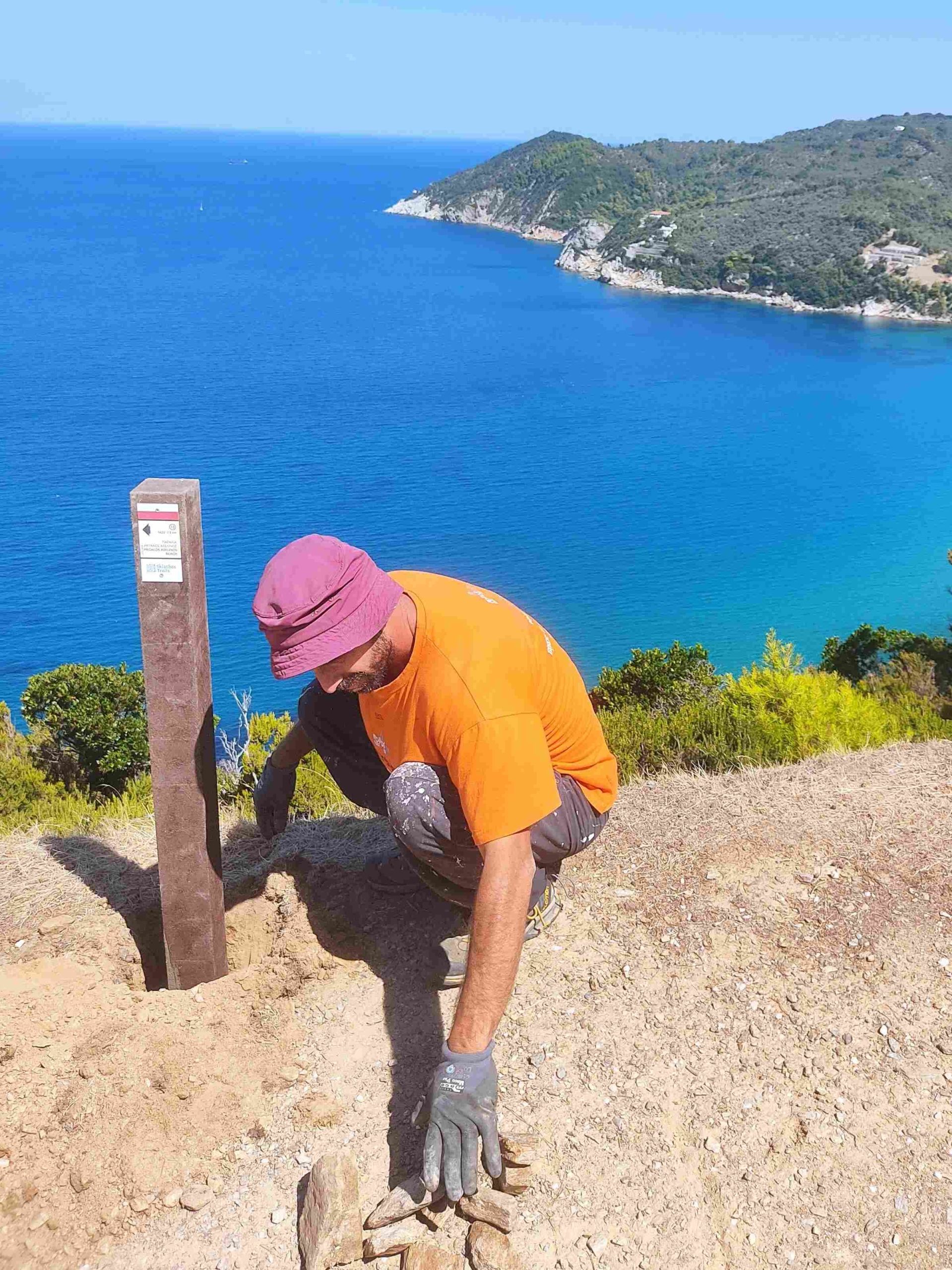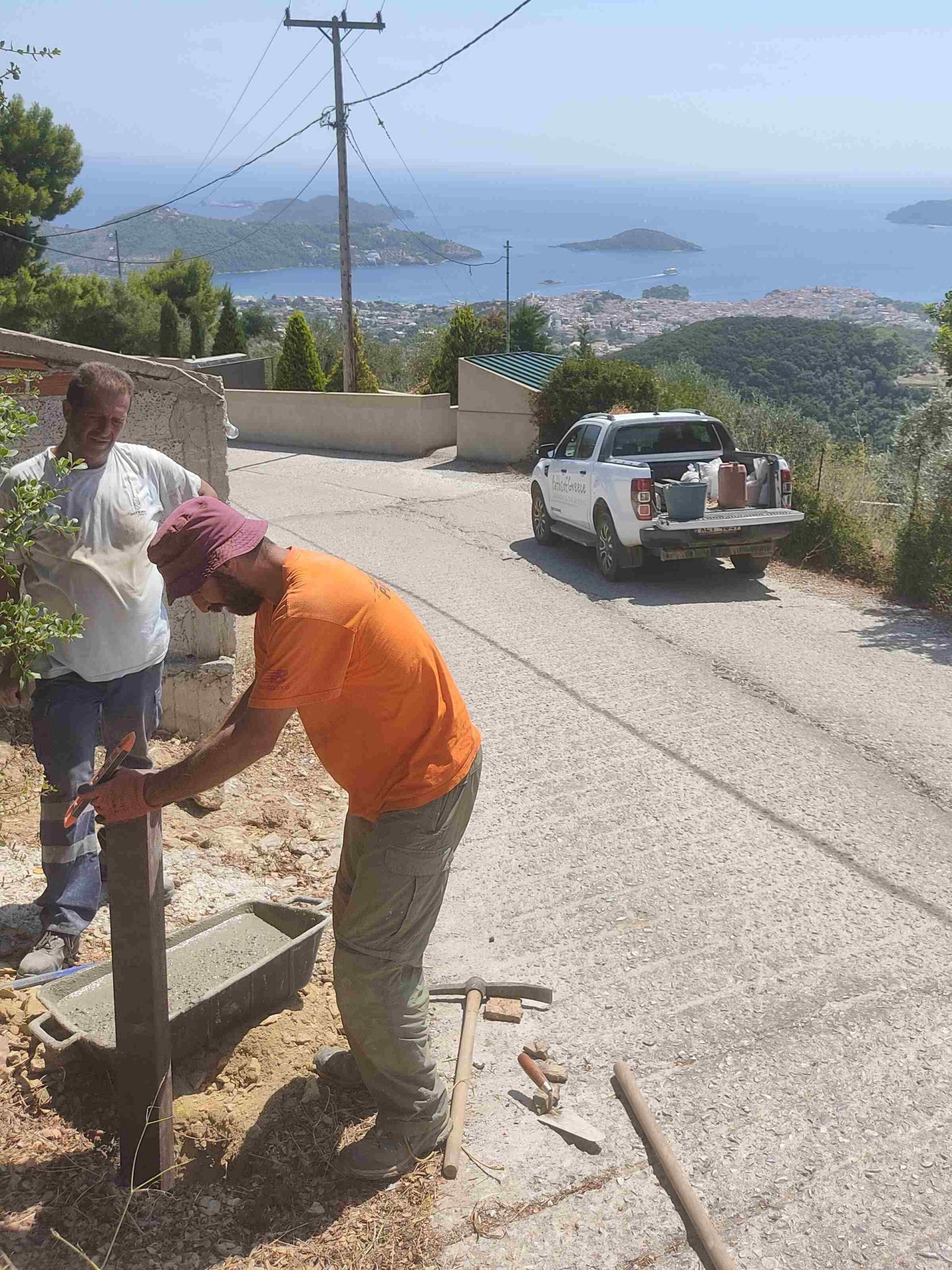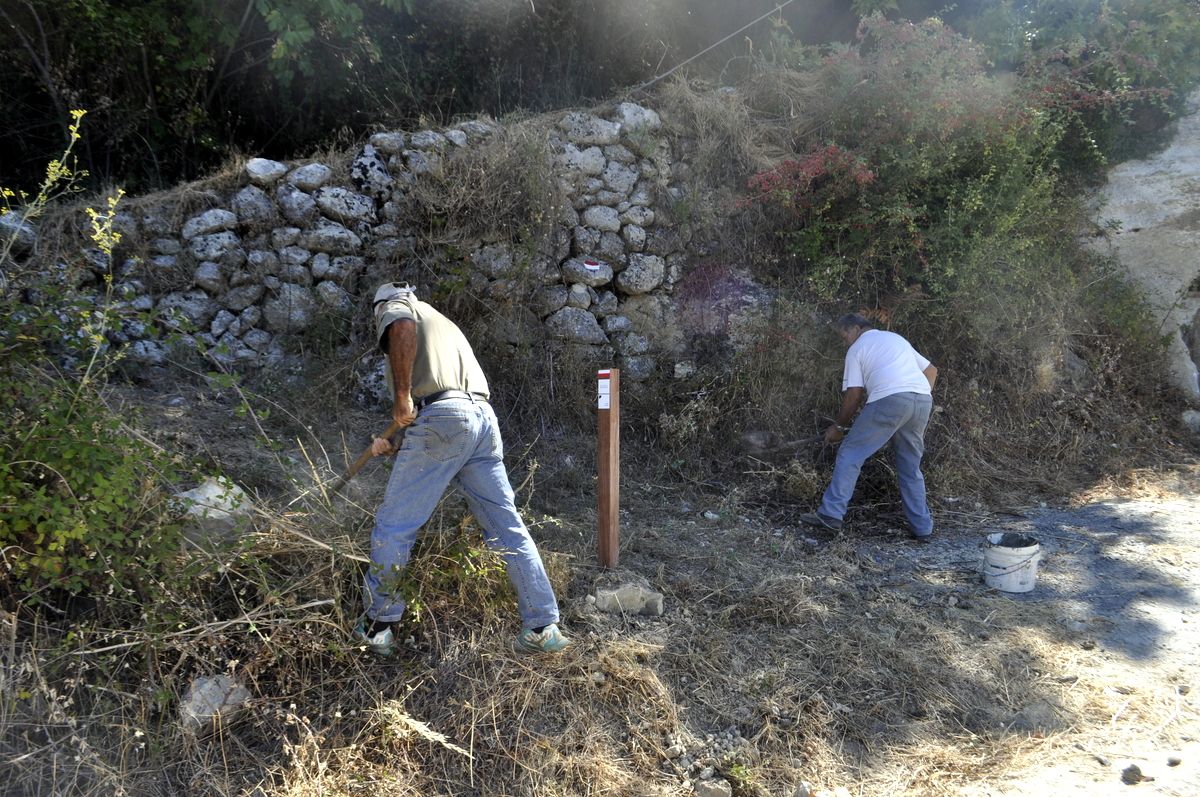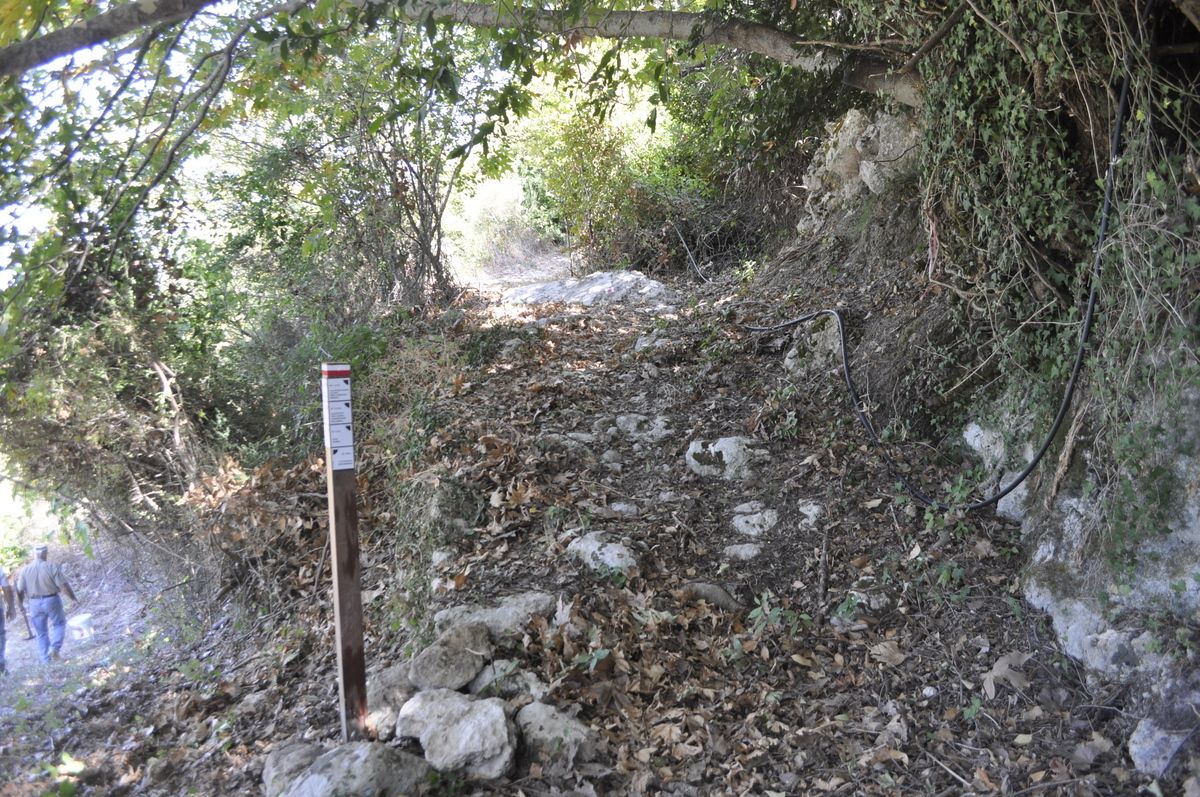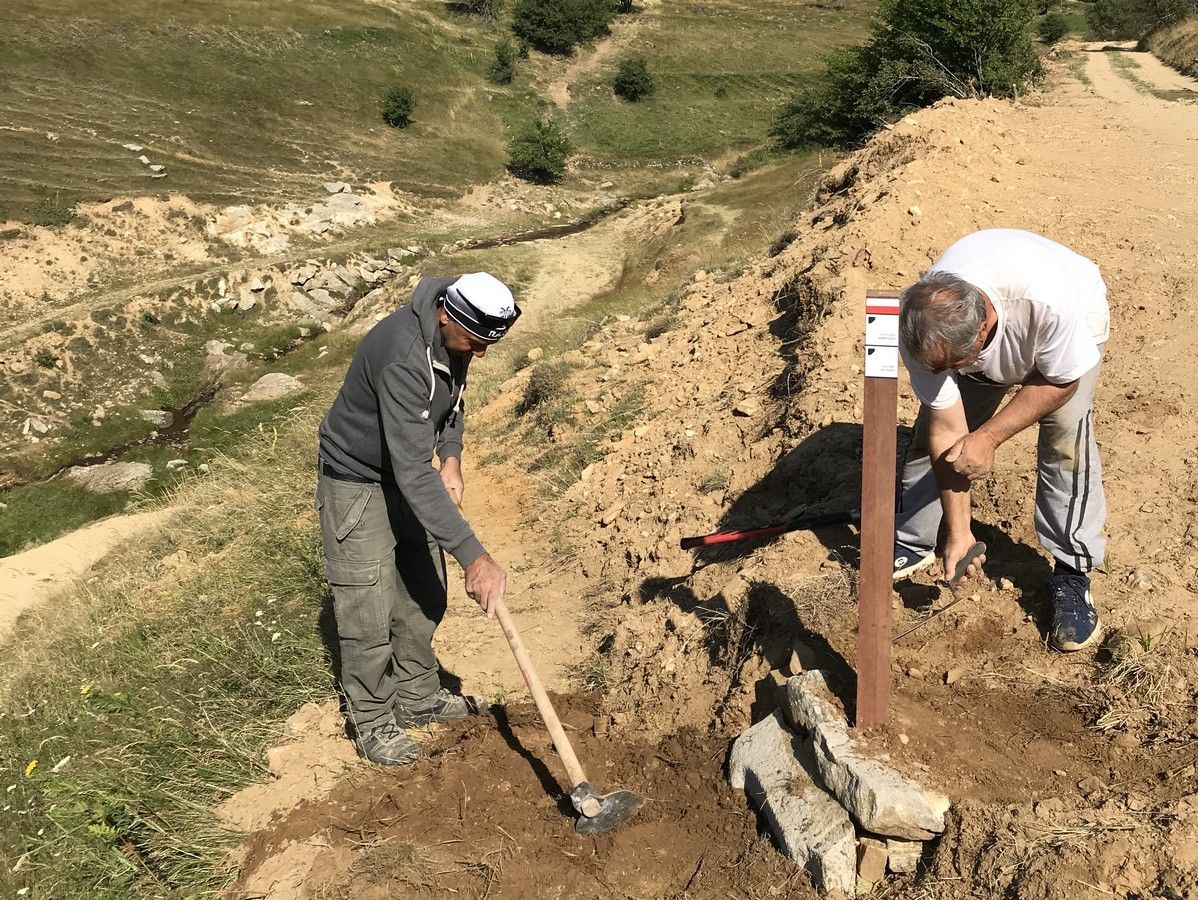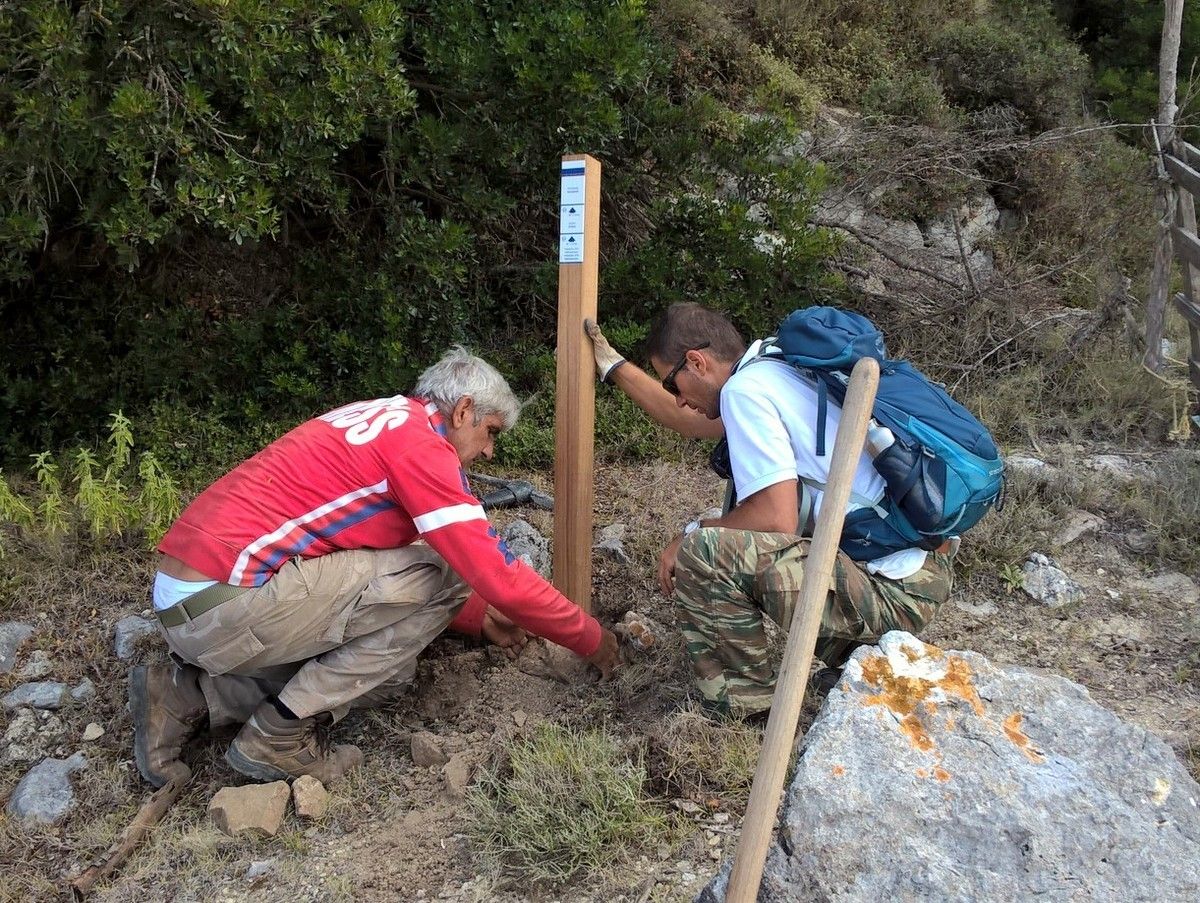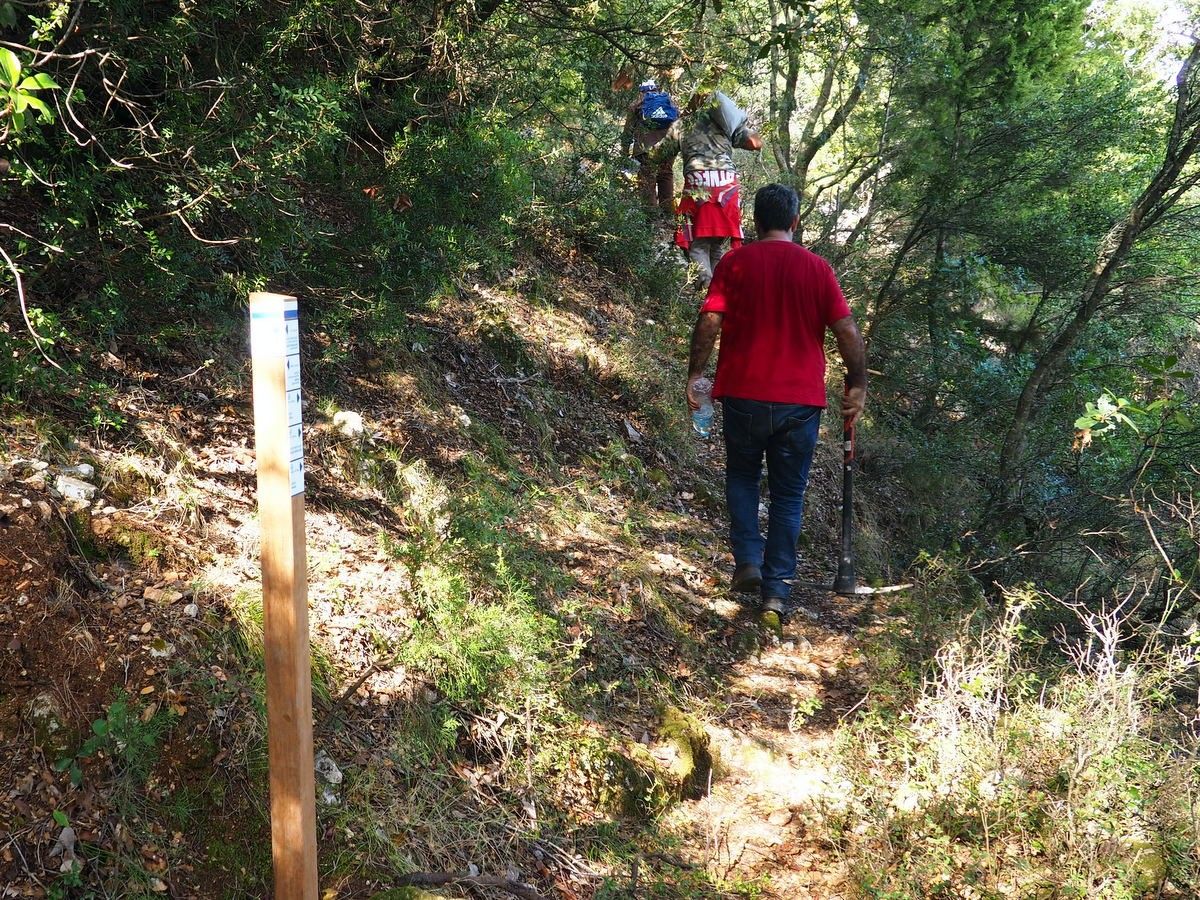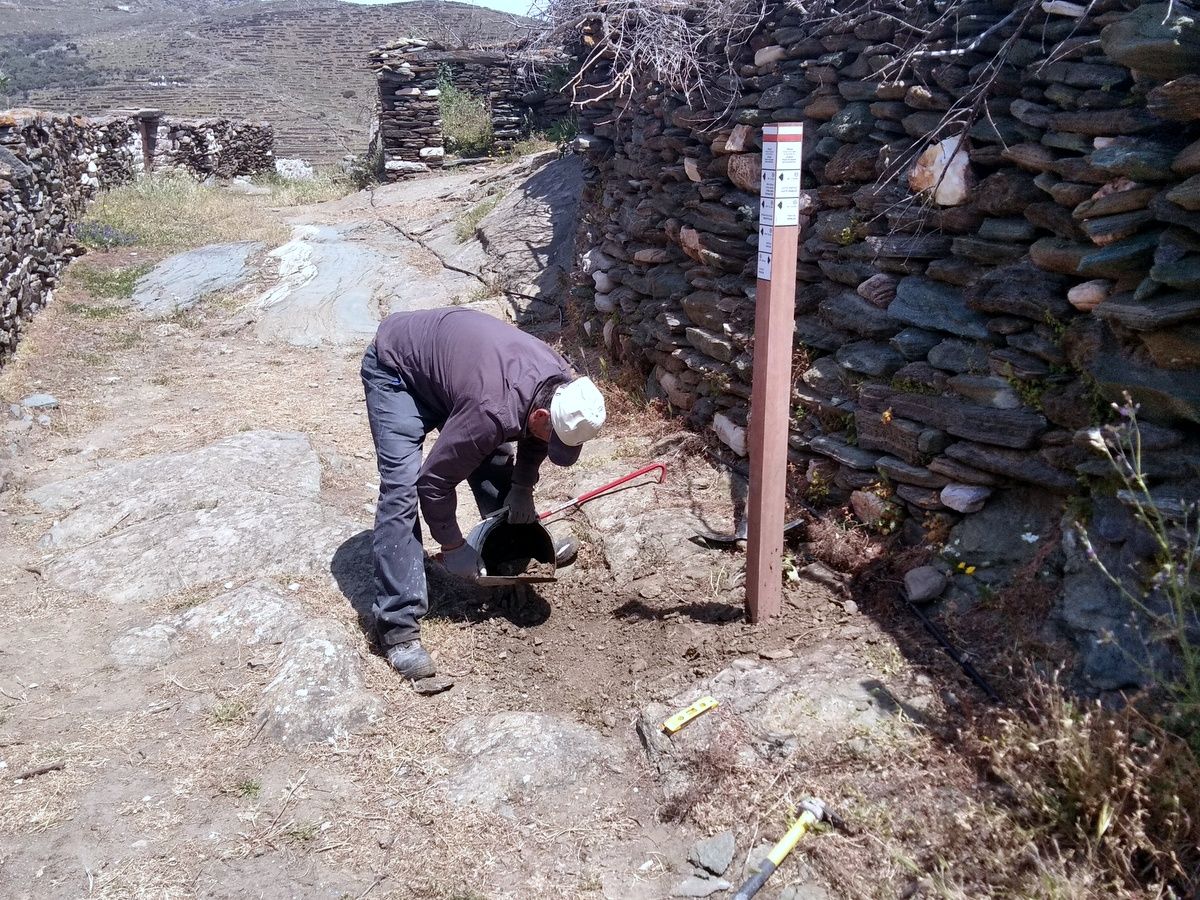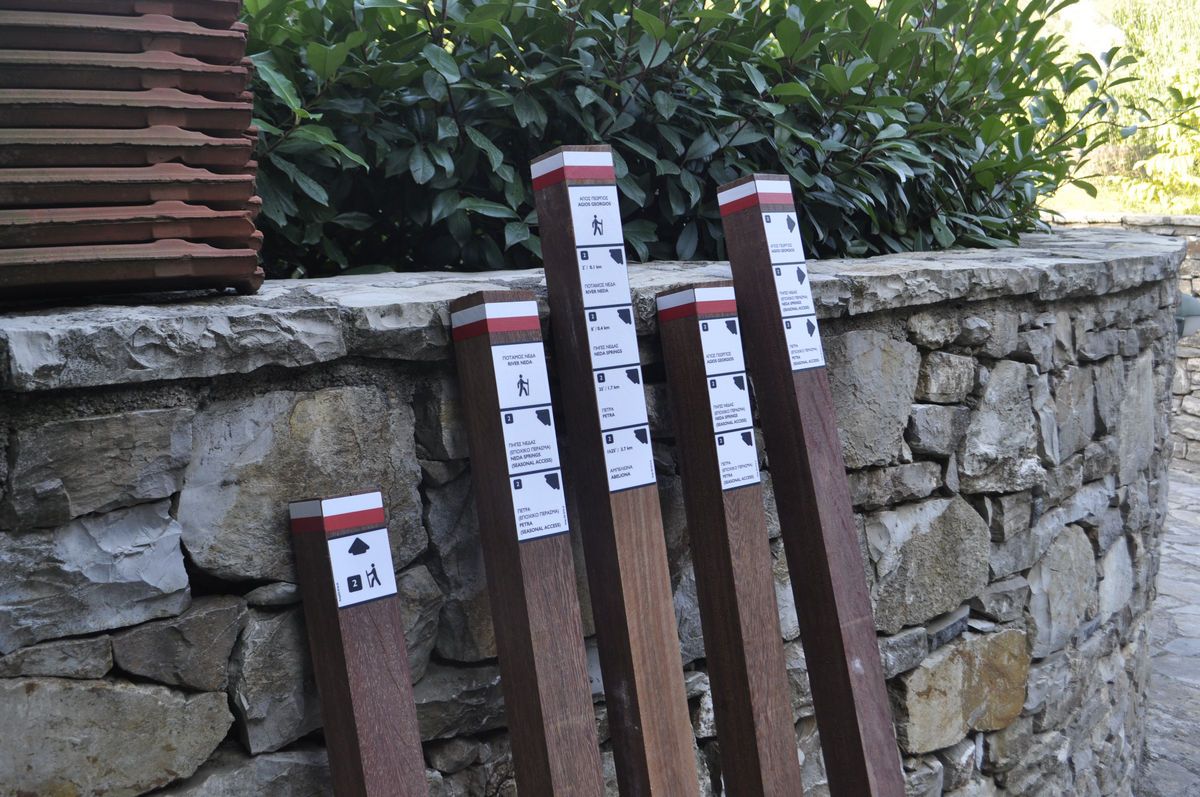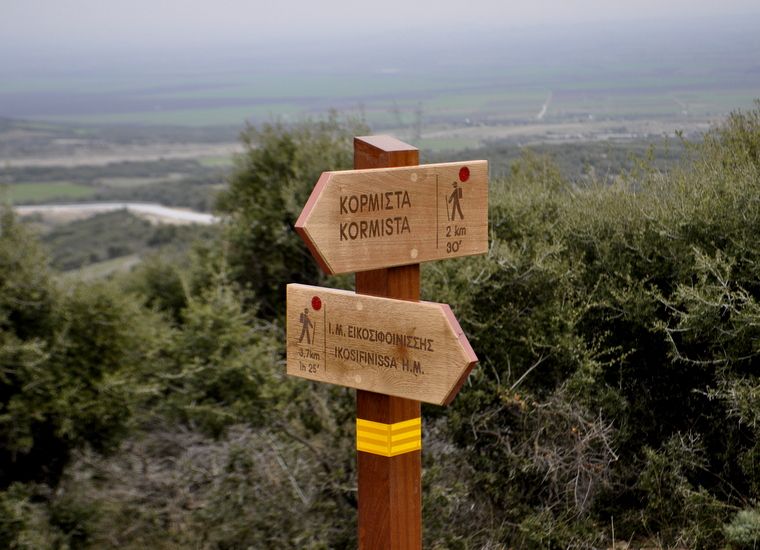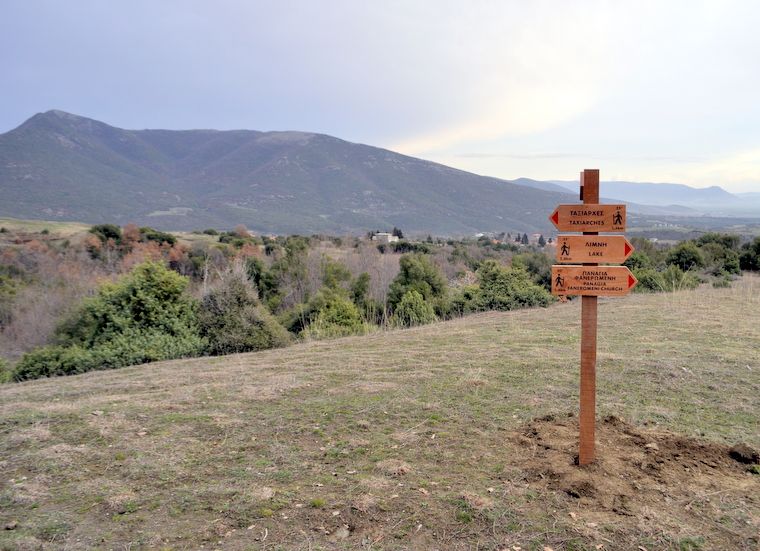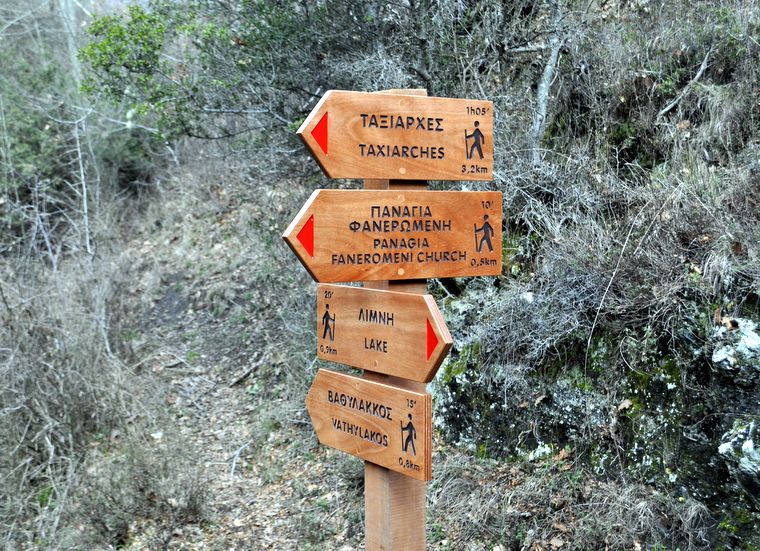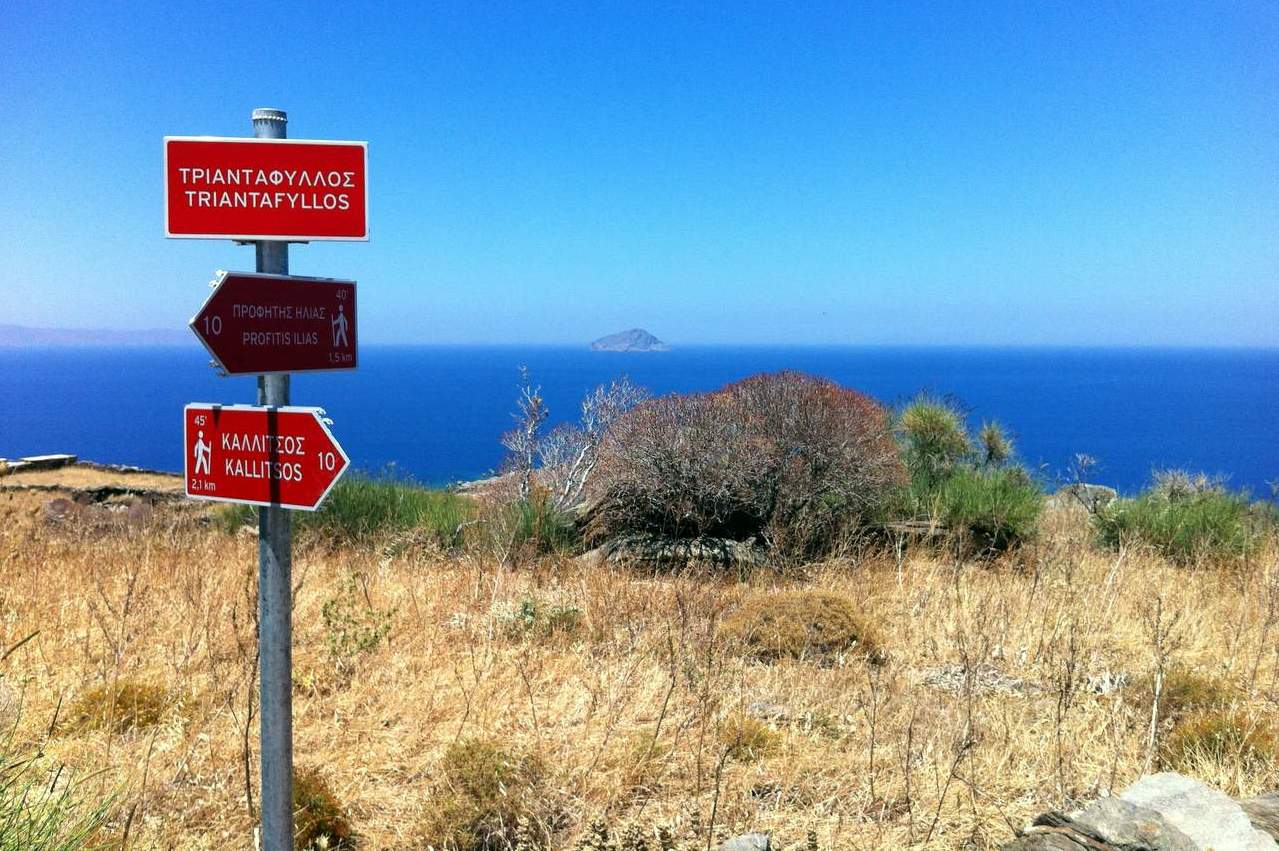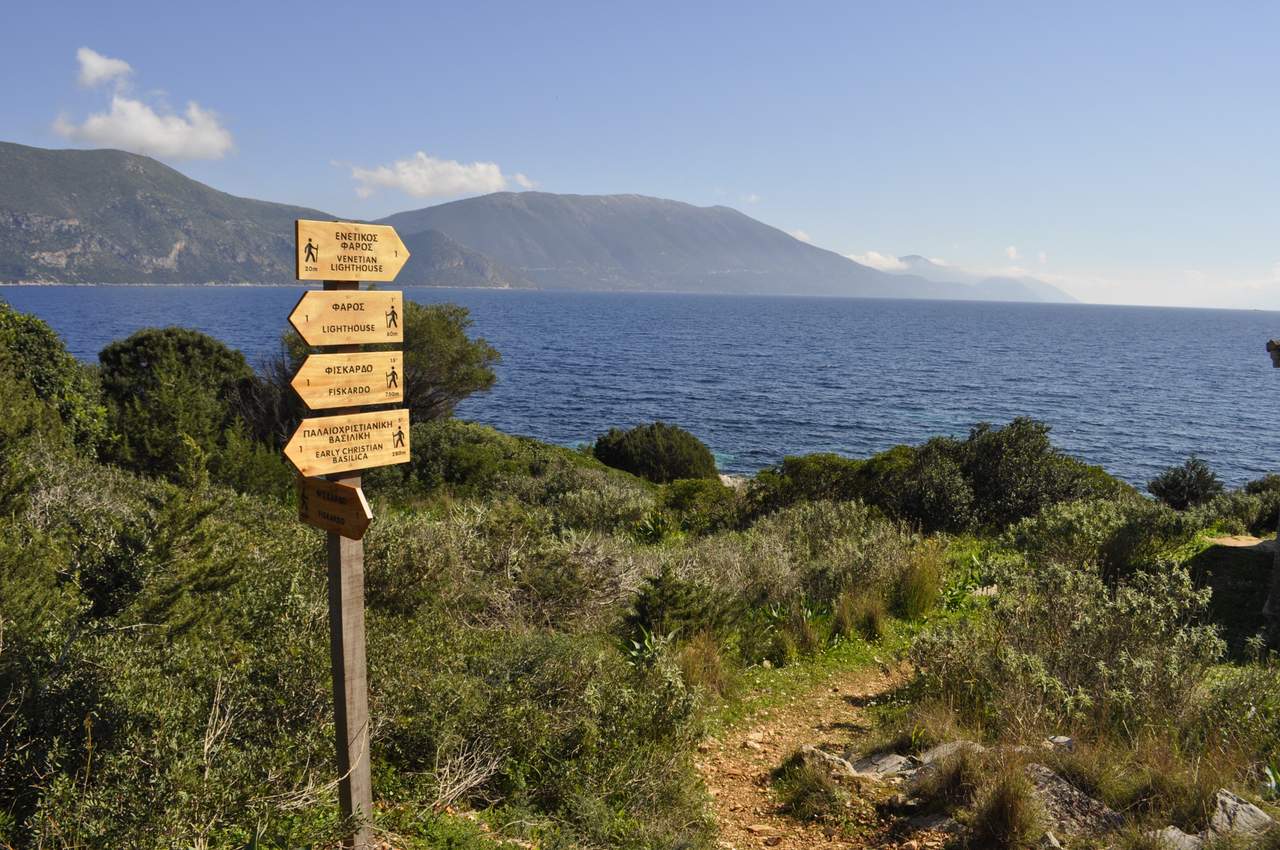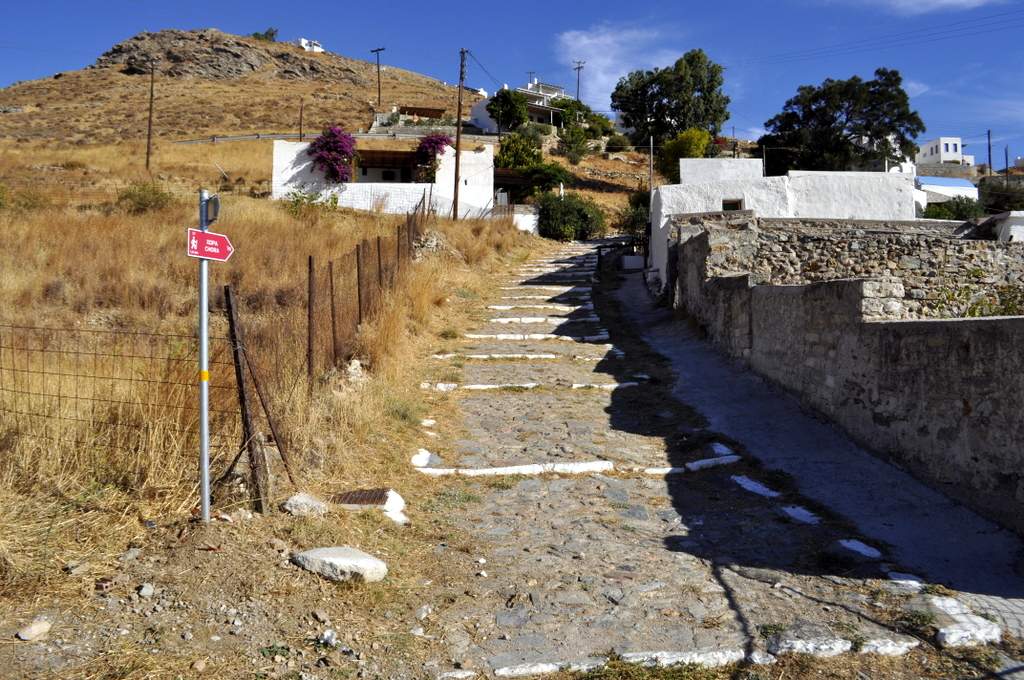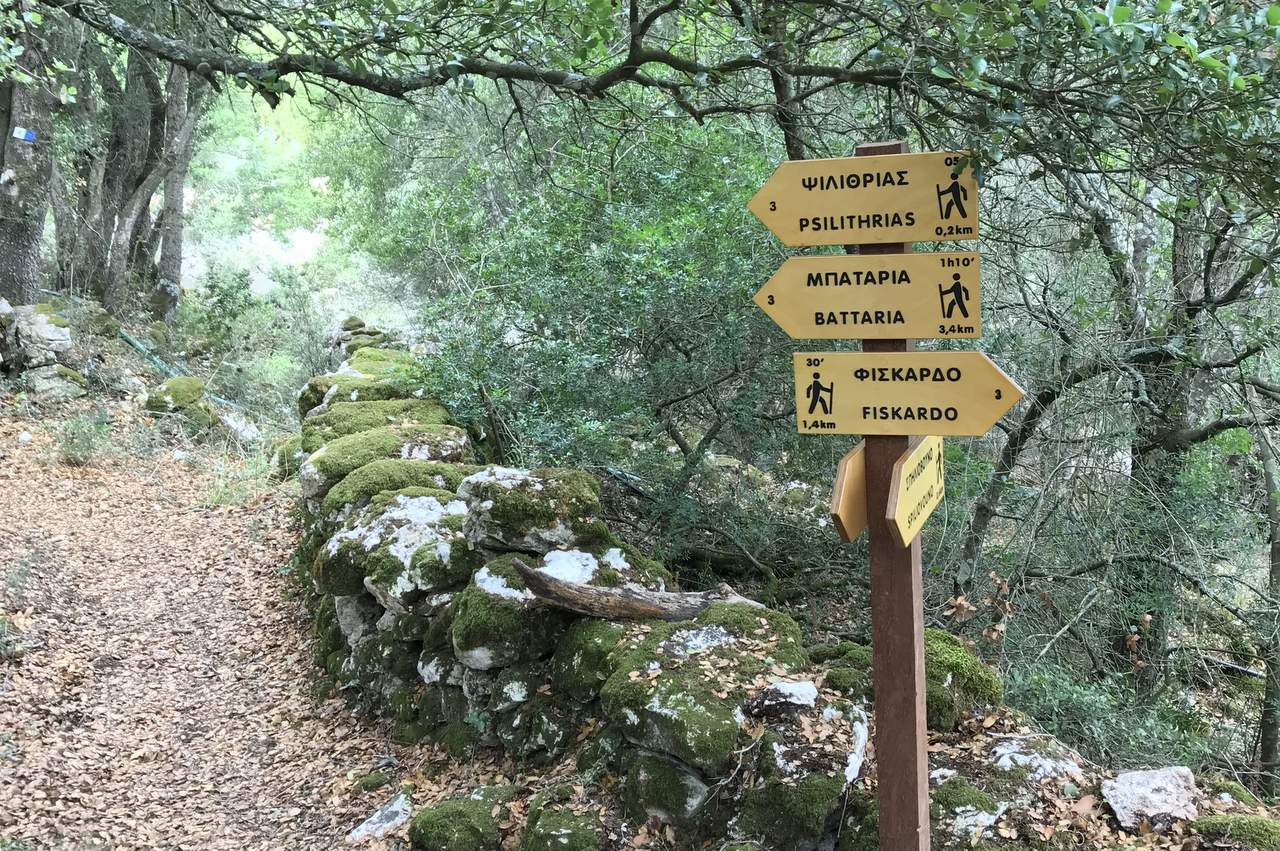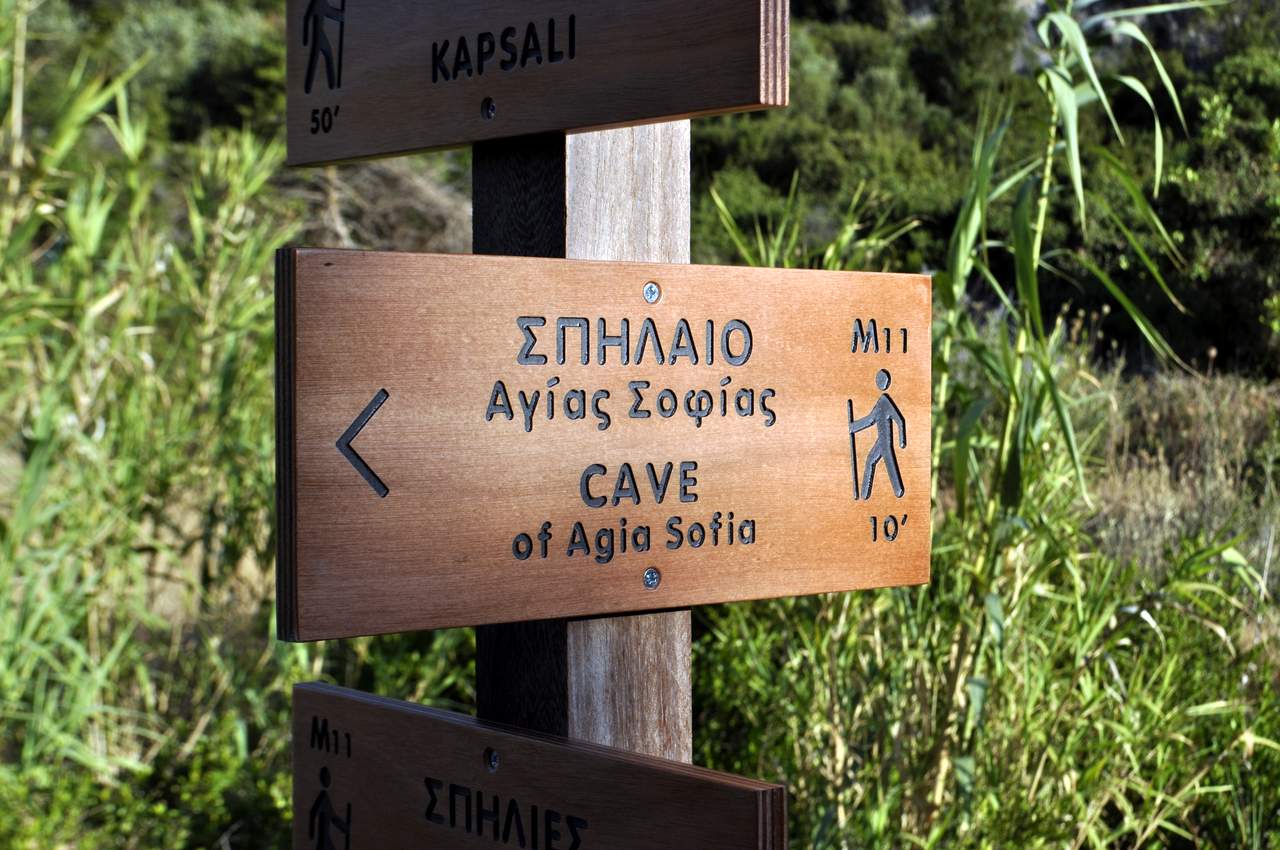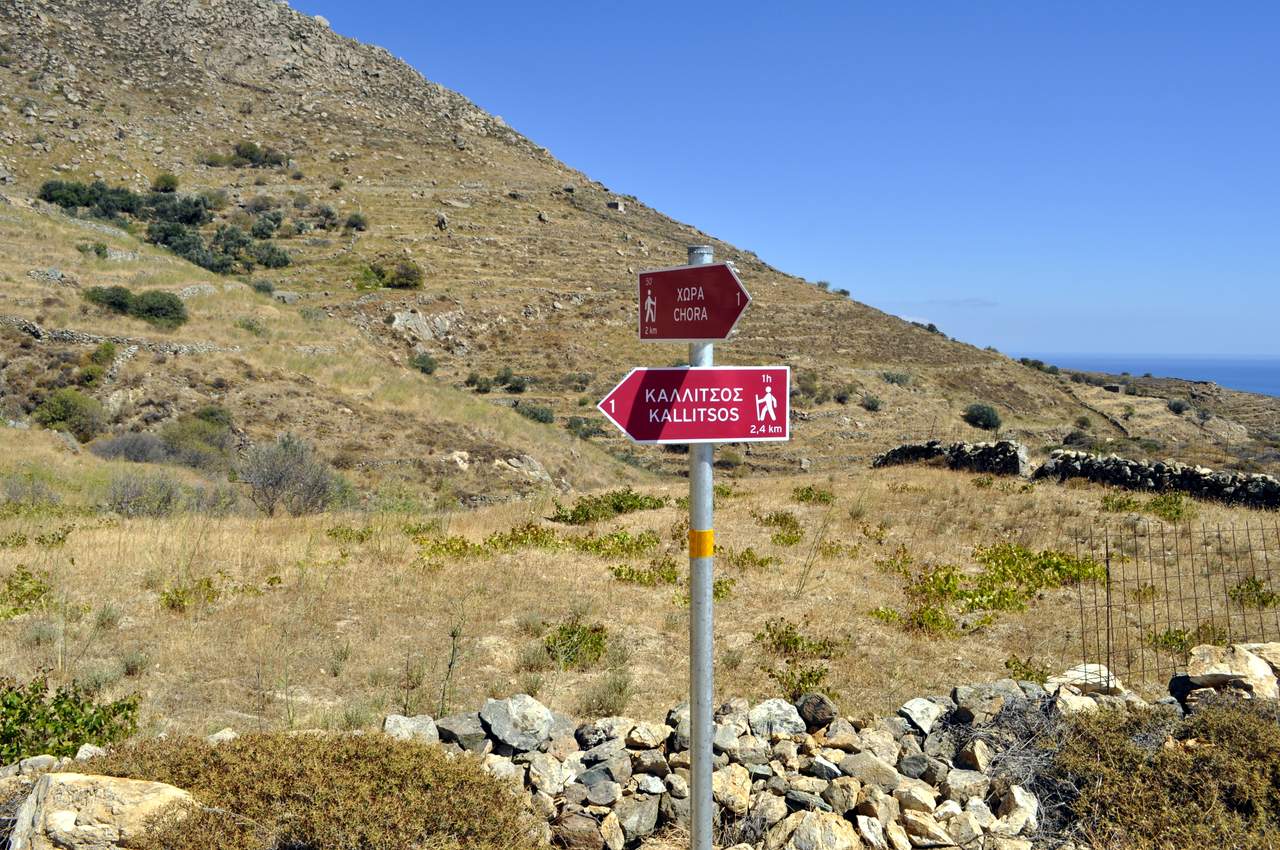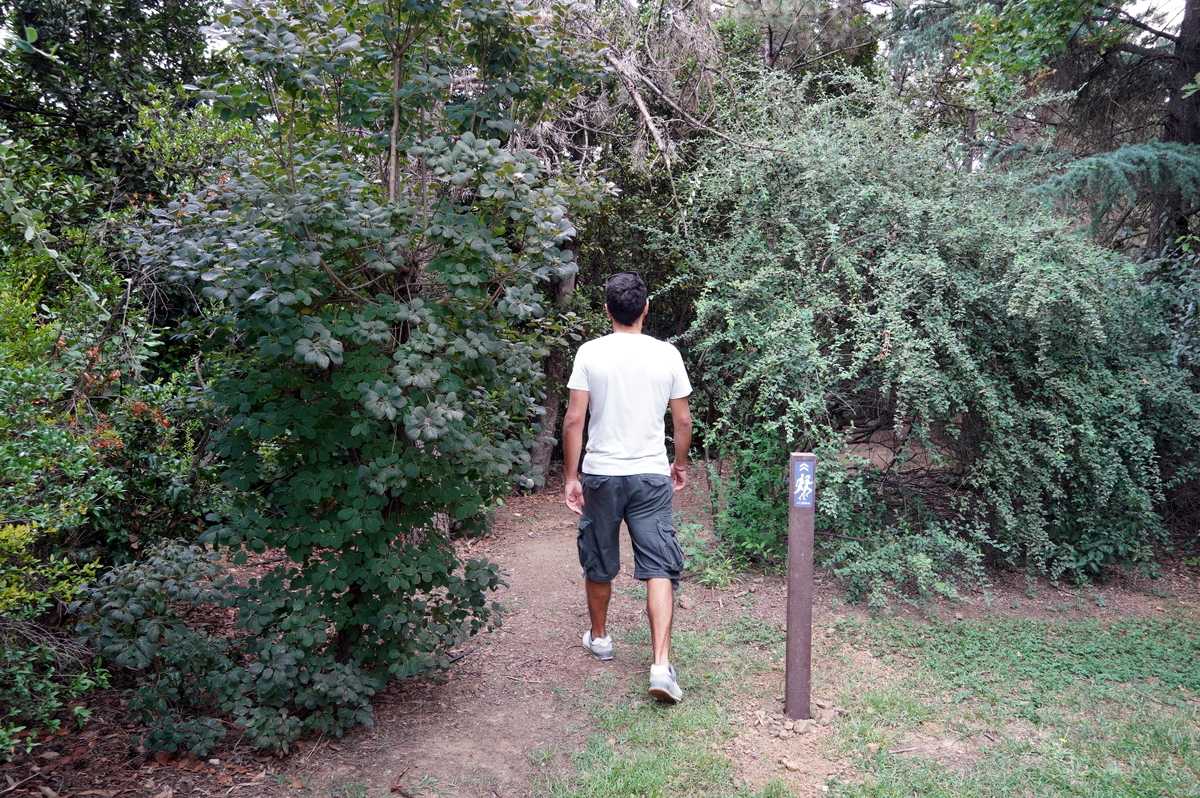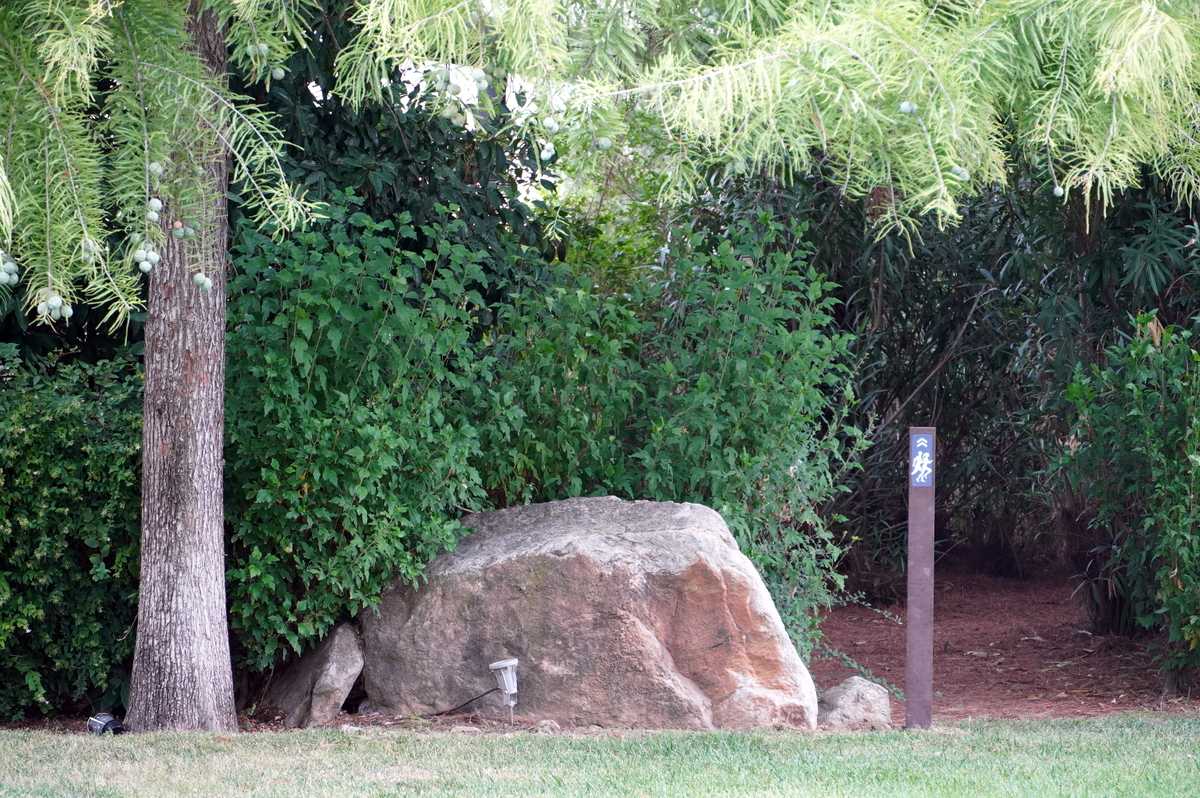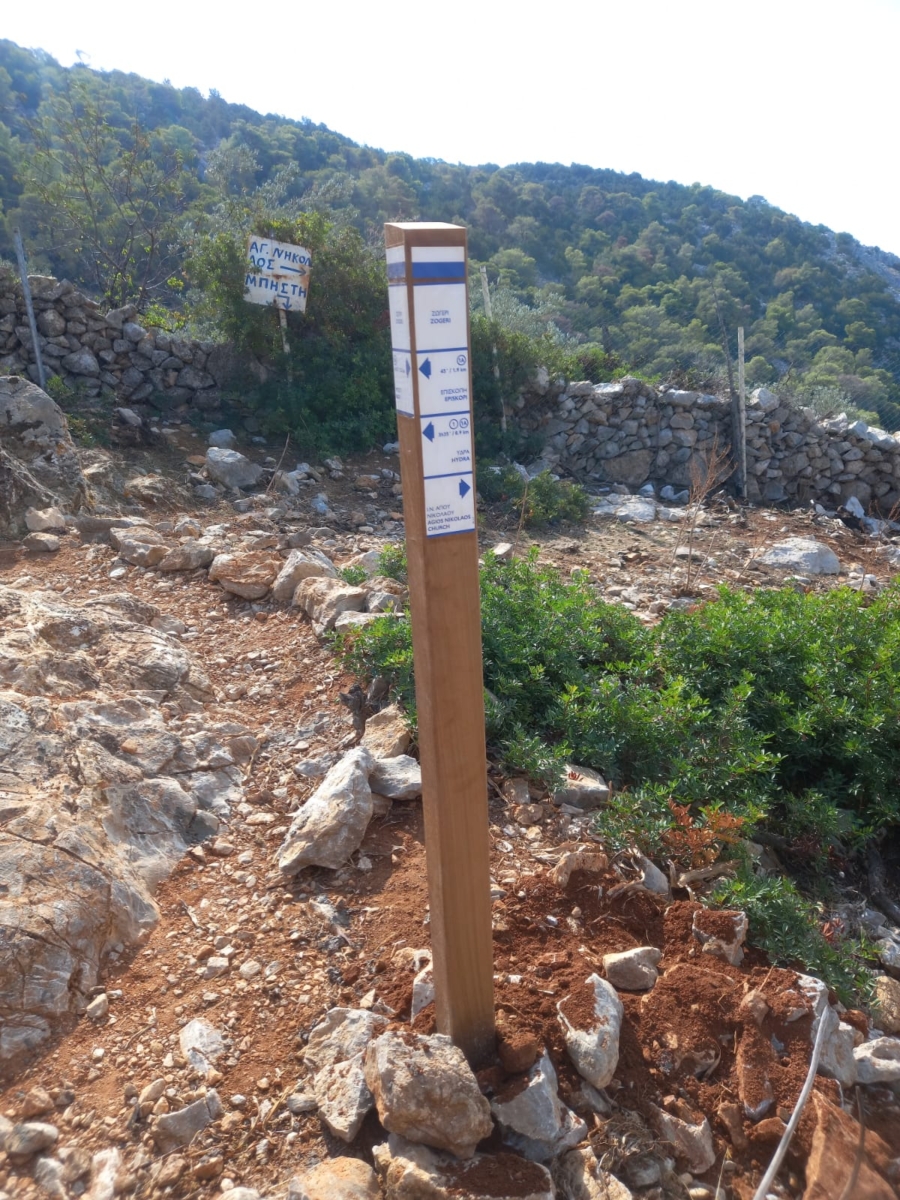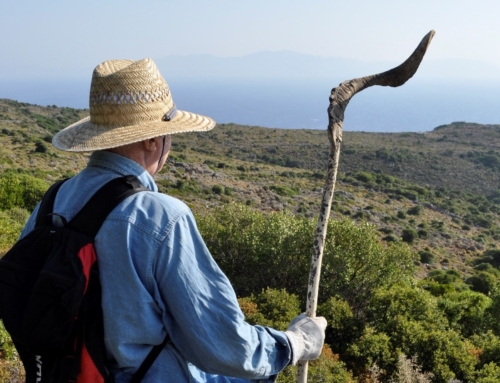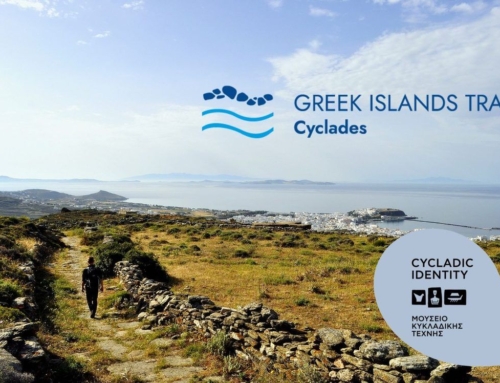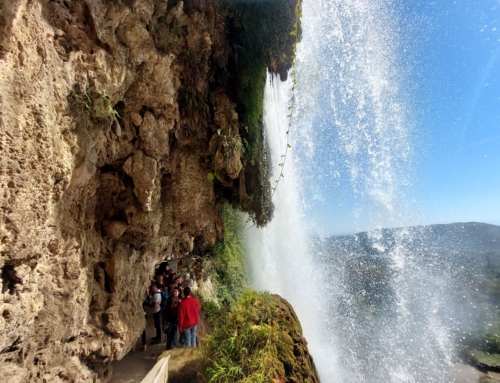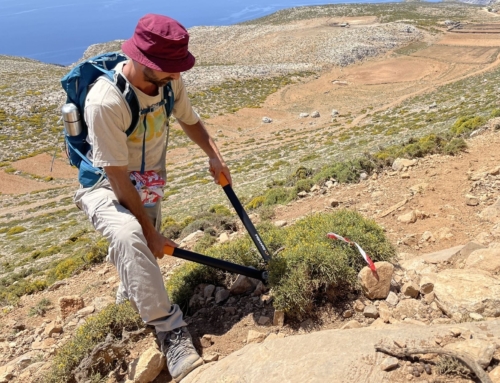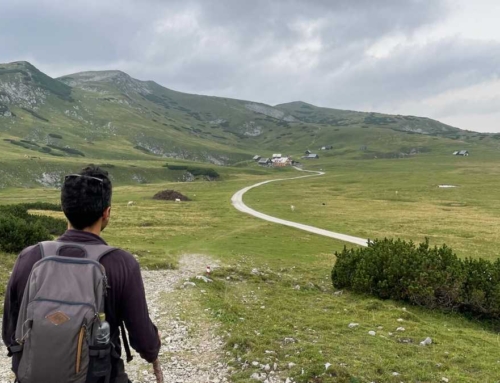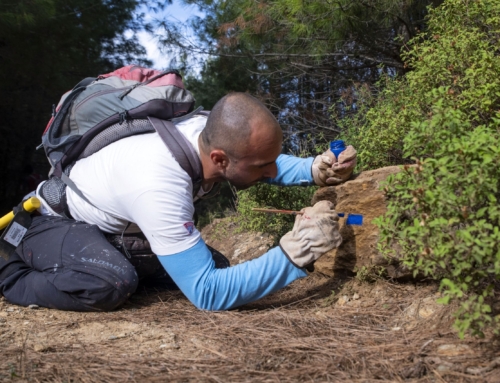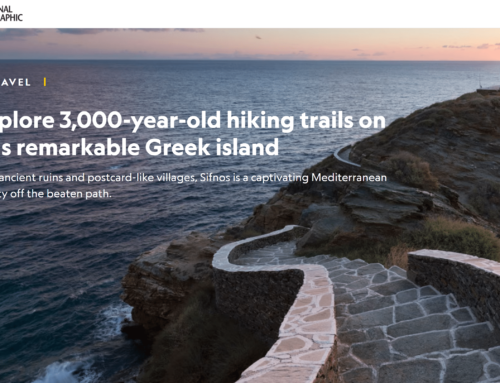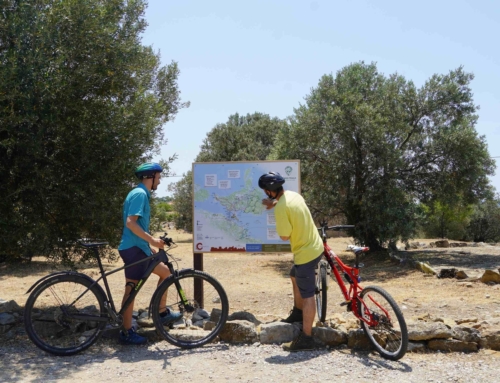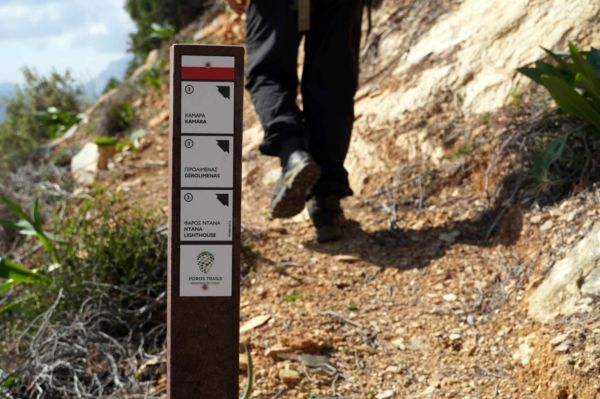
The signage we use at Paths of Greece can be divided into three main parts:
- marking with colour, which indicates the direction of the route. We have mentioned it in previous blogs.
- marking with directional stakes and
- information signs.
In this article we will refer to trail directional signs.
Contents of directional signs
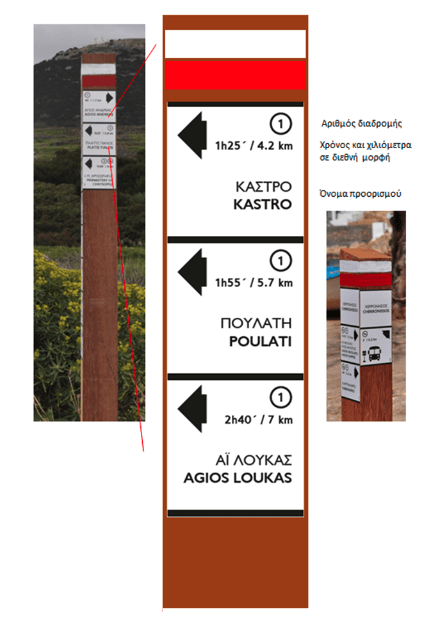
The marking with direction signs is done at the starting points of the route and at the main intersections. It aims to determine the position of the hiker.
It includes information such as:
- the point or settlement to which each leg of the route is directed to (intermediate and final destination),
- the distance in kilometers,
- the estimated time required for hikers to reach the destination and finally,
- the route code.
Also, the direction signs can contain the toponym of the specific point, indications of dangers, altitude, etc.
Such information is necessary to enable hikers to do their own planning. This of course depends on the strength and appetite of each person. Additionally, this information provides a greater sense of security.
Advantages of directional signs
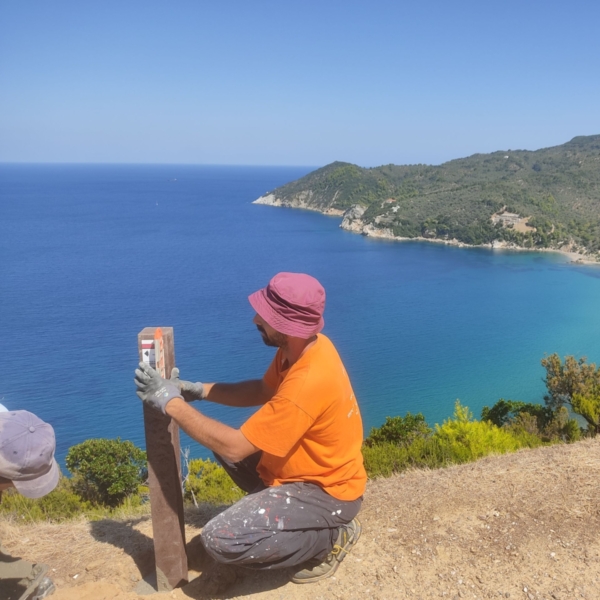
At Paths of Greece, with international experience and know-how, we have marked many kilometers of trails. Thus, we have seen and tested many marking systems.
We have concluded that the best way to mark Greece’s hiking trails is a marking system with four-sided stakes. Signs with indications of destinations, distances, times and directions are screwed to their sides.
We choose this method as opposed to traditional signs that have only one side of a large size, because we believe that with four sides we gain a multitude of advantages:
- Because of the four sides it can hold more information than on one side.
- The four sides allow a better indication of the direction of the route. The combination of the side and the arrow can indicate the exact course.
- The information is shared on many sides and thus we avoid visual oversaturation. Each side has specific information, making it easy to read.
- Less intrusive than the bulky signs commonly used.
- Greater resistance to corrosion due to small size. Large protruding signs are more affected by natural phenomena.
- They are a combination of functionality, simplicity and aesthetics.
- Its small size results in lower costs and greater ease of installation and correction.
Trail directional sign material
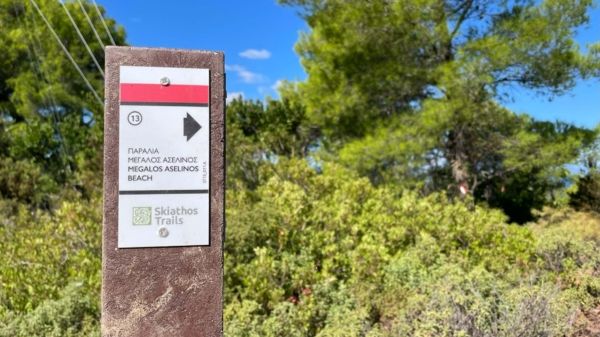
Another important aspect of marking stakes is the material used. Now, instead of wood, we use 100% recycled (and recyclable) plastic. These materials are compressed and take a form largely similar to that of wood.
The positives of recycled plastic are many and important. For example, the longevity of the material is longer, as it does not corrode like wood. At the same time, its elasticity allows it to deform and return to its original form under great pressure. Equally important is the greater resistance to fire effects than wood.
Of course, among the positives is the great environmental impact, as well as the awareness of the population regarding new alternative technologies that deal with the modern problem of uncontrolled pollution and reckless consumerism.
Installation of direction signs
The sign posts are installed with the longevity of the sign in mind and the prevention of vandalism. At the same time, an effort is made for as little intervention as possible in the natural environment.
The installation process begins with digging a pit, approximately 0.5m – 1m deep, depending on the height of the stake itself.
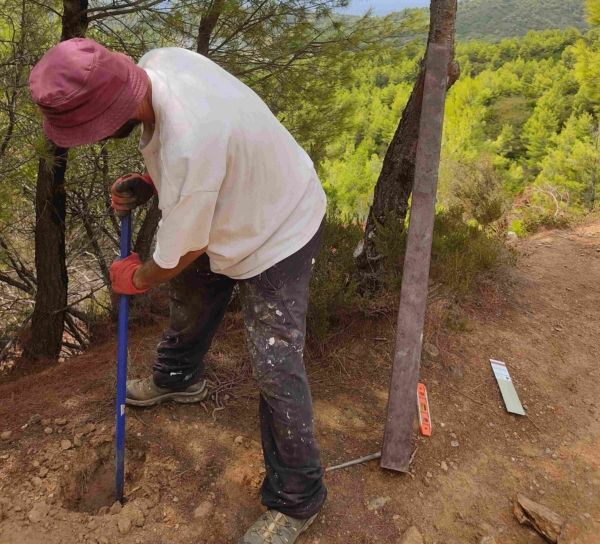
Then, an iron rod is wedged vertically at the base of the pile, in order to stabilize it.
The stake is placed in the hole and the space around it is gradually filled with cement and stones.
The cement stops about 5 cm below the soil surface and the filling continues with soil.
Depending on the individual circumstances, a stake may not be driven into the ground, but placed on a surface, such as a wall or a terrace, by using studs.
Of course, no method is absolute and optimal. We believe that improvement comes through dialogue and exchange of views.
So comments and suggestions are welcome!
Interested in trail development and signage in your area?
Contact us to discuss the best solutions.
Examples of hiking networks
Want to see an example of path direction signs made by Paths of Greece?
See the paths of Poros and Kythera up close!

